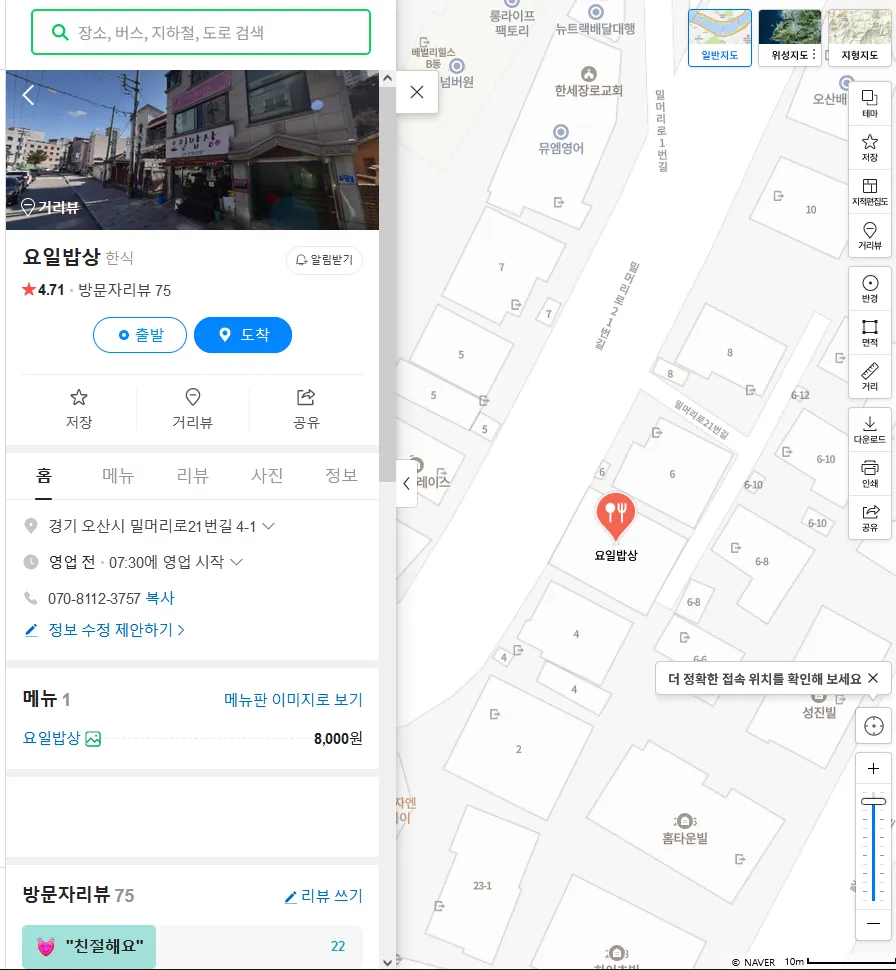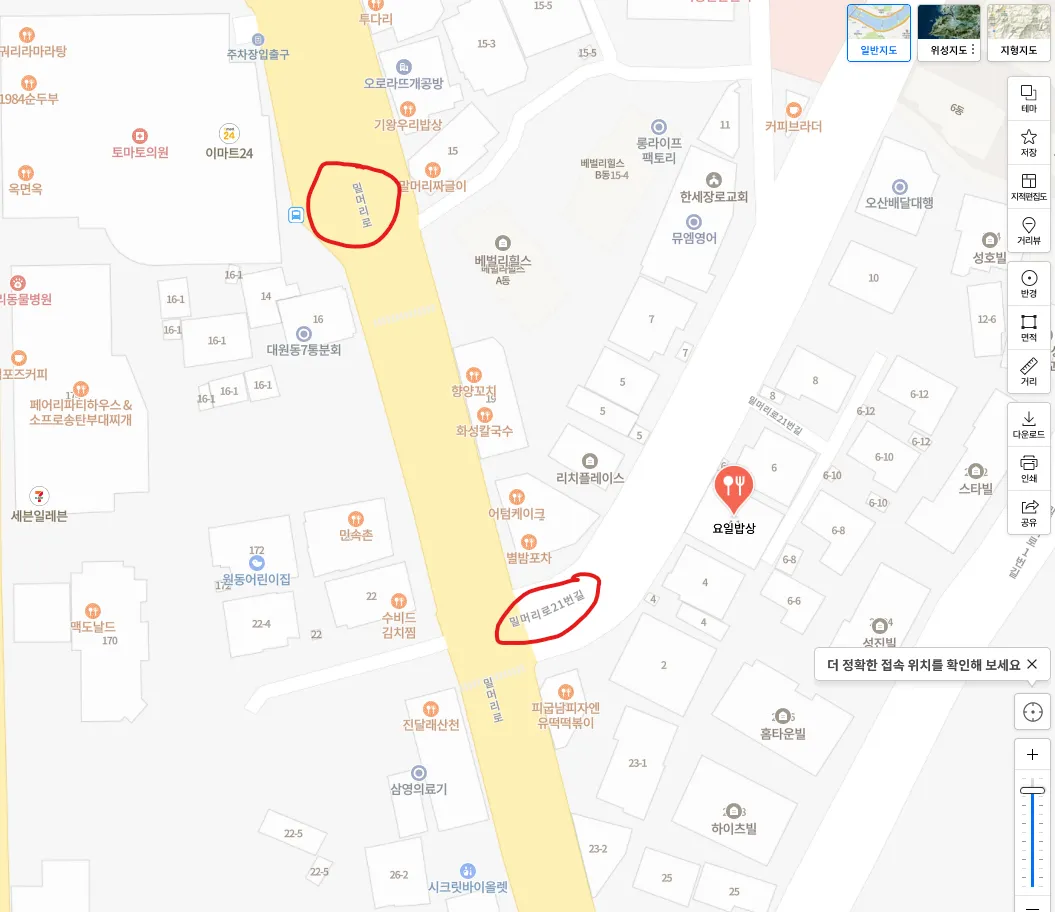South Korean Street Addresses Explained
South Korea uses a slightly different address system than the United States, made even more confusing by the fact that it’s in another language. In this post, I will show how the Korean system is actually not that confusing, is pretty logical, and how to easily read addresses.
Anatomy of an Address
In the US, an example address looks like this:
1234 Tree Road
City, State
In South Korea, this would instead look like this1:
State, City, Tree Road 1234
Note that the Korean address goes from logically “largest to smallest” - State > City > Street > Building/Block, as opposed to “smallest to largest” like in the United States. It’s backwards!
However, Korea doesn’t have states, it has provinces and districts! So a Korean address would actually look more like this:
Province, District, City, Tree Road 1234
Here are the translations for the suffixes for these words in Korean:
| Korean | English gloss | Meaning |
|---|---|---|
| -도 | -do | Province |
| -구 | -gu | District |
| -시 | -si | City |
We’ll get back to Seoul, a special case, at the end.
The Street Name and Street Number
Let’s now ignore Province, District, and City — in the US you can often skip those and just input a street number and street name into Google Maps and, since that is likely fairly unique in the area, it will find the right result. The same is true in Korea.
In the US, streets can be called Roads (Rd), Drives (Dr), Lanes (Ln), Streets (St), Boulevards (Blvd), and so forth. In Korea, the equivalents exist too:
| Korean | English gloss | Meaning |
|---|---|---|
| -길 | -gil | Street, usually small |
| -로 | -ro | Road |
| -대로 | -daero | Road with over 8 lanes; literally “Big Road” |
Branching Roads: If they were in English
In Korea, large major roads are usually named after a landmark, or after the neighborhood. For example, “University Street” or “Songtan Park Road”.
Meanwhile, smaller minor streets that branch off of major roads are usually named after the road that it diverges from, with a systematic numbering system attached. There are three systems for numbering divergent roads.
For simplicity, let’s first explain the systems in English as if the US used that system, and then show how they are named in Korean.
I will use the term “spur road” in English which is used by the highway system to deonate a smaller highway that branches off a major highway. Read more about spurs here or check out this video by CGP Grey about the US Interstate Highway numbering system.
Basic Numbering: Distance Approximation
Let’s say University Street uses the Basic Numbering system.
If a road branched off of University Street 230 meters away from the start of University Street, that road would be called “spur road that branches off 230 meters away from University Street”, or “University Street 230-away Spur Road” for short.
Because meter-precision is not that important, in Korea this distance is truncated by a factor of 10, so this would be “University Street 23-away Spur Road”.
Lastly, in this system it is considered the road number, so it would be “Univeristy Street #23”.
Serial Numbering: Rank Ordering
Let’s say Park Road uses the Serial Numbering system.
It has three roads that branch off of it, which we can call “the 1st road that branches off Park Road”, “the 2nd spur road that branches off Park Road’, and “the 3rd road that branches off Park Road”.
However, in Korean, they are more referred to like “Park Road, Road 1”, “Park Road, Road 2”, and “Park Road, Road 3”. e.g. not ordinals, just numbered. Think of this system like movie sequel titles: You wouldn’t call it “Star Wars Number Three” it’s “Star Wars Three”!
This system is particularly used more in Seoul, since the city is more densely populated.
Branching Roads: Now in Korean
For Basic Numbering, the ”#” can be translated into 번. 번 in Korean means number, much like the word number in English, or the number sign #. And then it also has the suffix 길 which just means street.
So this:
University Street #23 Road
Becomes this:
University Street 23번 Road
Becomes this:
University Street 23번길
For Serial Numbering, there is no 번, just 길 once again serving more like a movie sequel title.
So this:
Park Road, Road 1
Becomes this:
Park Road 1길
To summarize, a street name can itself have two parts: the major road name and the numbered minor road number plus a suffix indicating which system it’s using.
Street Number
After that is the street number, which has no prefix. This tripped me up at first because every other number in the address has a prefix.
While in the US the street numbers are often 3-5 digits long like 1234 or 12400, in Korea they are often only 1-3 digits like 9, 70, or 321.
So let’s update our examples with more representative street numbers:
University Street 23번길 70
Park Road 1길 450
Hypenated Building Number
There’s one more small caveat about street addresses! There are often very small alley streets that are not big enough to have their own road name. In the US, think about the back alleys of houses or between buildings. In Korea, these are given a hyphenated address number.
University Street 23번길 70-1
Park Road 1길 450-2
Buildings and Suites/Units/Rooms
In America, there are often addresses with multiple Suite numbers, and apartment units typically share a single address and have Apt or Unit numbers.
This is even more common in Korean cities since they are dense, and large apartment buildings are much more common.
| Korean | English gloss | Meaning |
|---|---|---|
| -동 | -dong | Apartment building; literally “neighborhood” |
| -호 | -ho | Room |
Building and room is sometimes stylized without suffixes and just a dash. However, that is admittedly confusing and could potentially look like the street address number!
Example: Osan
Let’s do an actual example:

The address is:
경기 오산시 밀머리로21번길 4-1
For whatever reason, Naver Map has truncated the province suffix, but the province is Gyeongi. The city is Osan.
The street name is, in full, 밀머리로21번길. But we can break that down!
The major road is named 밀머리로21번길, and we can confirm by zooming out and seeing where our road branches off from the major road:

Based on 21번길 we know it’s about 210 meters away.
Lastly, 4-1 is the street number plus a hyphenated number. If you look at the map again, there are actually four “rectangles” on the map, or four buildings, that all share the number 4. 4-1 is how we distinguish those 3 buildings.
Example: Seoul: A Special City
Seoul is physically located inside 경기도 but is administered as a special city. Addresses in Seoul therefore skip the province.
In formal settings, like on official documents, the address is written with the phrase “Special City”:
| Korean | English gloss | Meaning |
|---|---|---|
| 서울특별시 | Seoul Teugbyeolsi | Seoul Special City |
But the “Special City” part is often skipped in casual conversation and on maps.
Neighborhoods
In America, large cities like San Francisco, New York City, or Seattle are further subdivided into boroughs or neighborhoods, which can have administrative or cultural significance. These neighborhood names are not officially part of the American street address, but is often included to help clarify the location of an address, or disambiguate multiple locations.
This is also the case in South Korea. In Korea, these kinds of neighborhoods have the suffix -동. Although this is the same word for an apartment building number, in practice these wouldn’t be confusing because one is attached to a number (apartment building, aka neighborhood), while the other is attached to the name of a neighborhood (administrative neighborhood).
The Legacy Neighborhood Address System
Actually, prior to 2013, South Korea did have the neighborhood name in the address system!
South Korea’s older address system did not have a concept of “street names” and “street numbers” at all, and instead relied on a neighborhood-and-number system. This is also known as the “land-lot number addressing system”, and is still the official address system in Japan.
Although officially deprecated in 2013, culturally this address system is still used by some people, particularly taxi drivers and food delivery drivers. For this reason, this alternative address is also provided on some map software like NaverMap and KakaoMap.
I won’t elaborate further on this system, because it’s quite a bit more complicated and it’s not needed nowadays - the computers do it for us.
Footnotes
-
Korean zip codes are not used for identifying location, just for postal purposes. Well, that’s also true in the US too! So they are omitted from this post. ↩